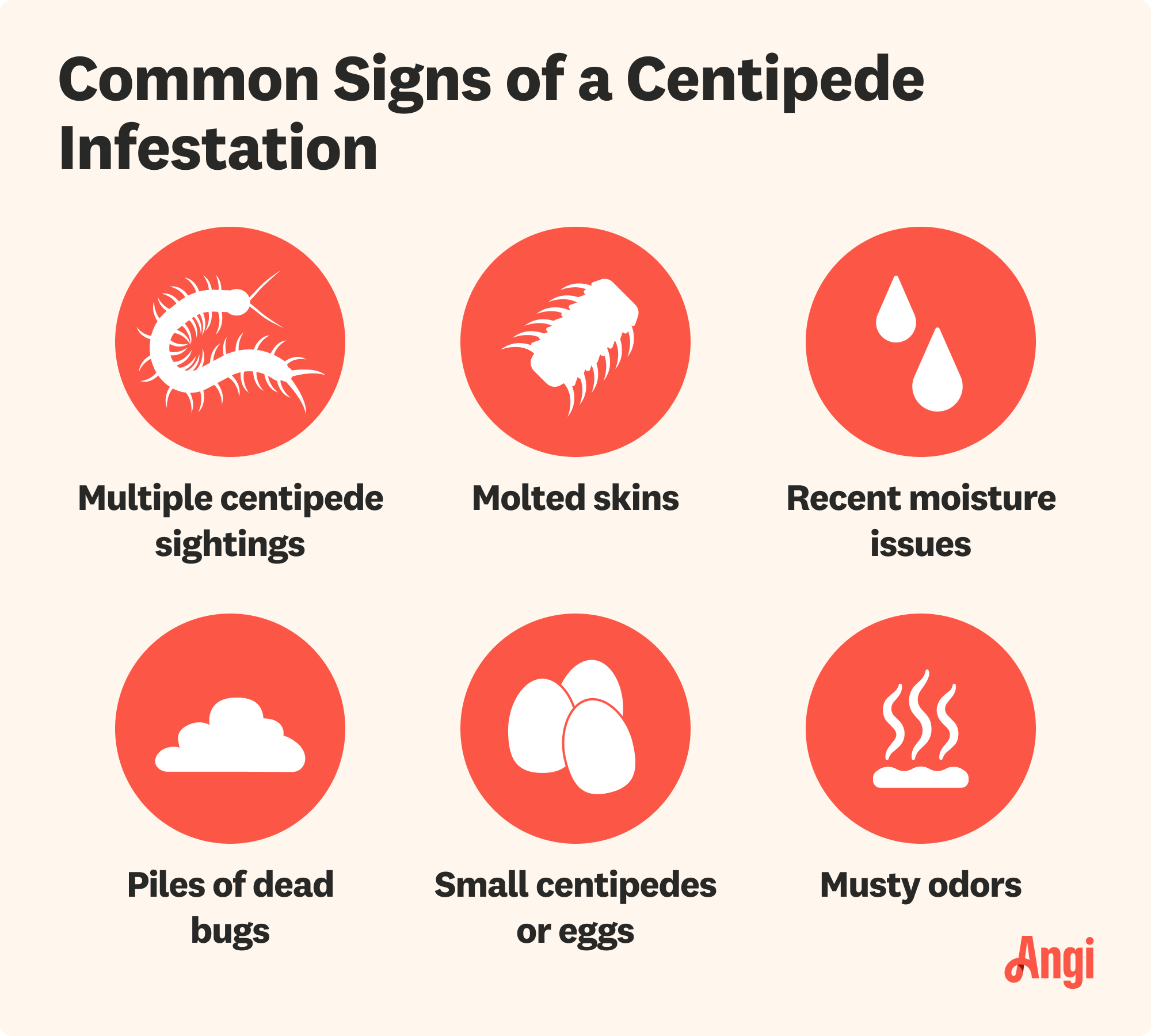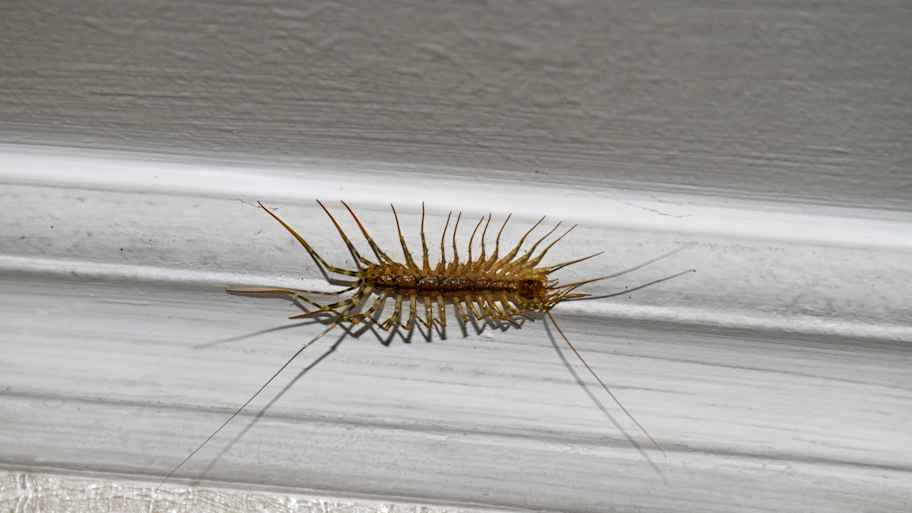
If you discover a wasp nest near your home, you’ll want to remove it ASAP. Learn wasp nest removal cost factors in this guide.
Here’s what to do when there are too many legs on your hands


House centipedes crave dampness and other insects, and both might exist in your home.
A single bug might be nothing, but more than that means it’s time to do something.
Pest control pros target insects at all stages of the life cycle, so call in an expert for a job done well.
House centipedes are harmless, but that might be of little relief to you when you find one in your house. While a single scurrying insect might indeed just be an isolated incident, especially after a rainstorm, it stands to reason that they might be hungry and in search of a food source. If this sounds like an experience you’d rather avoid at all costs, then it pays to know the major warning signs of a house centipede infestation.

If a single centipede sighting sounds bad enough, then imagine—or rather, don’t—what an infestation might look like. Here are some warning signs that you’ve got too many legs on your hands.
Again, spotting a single bug doesn’t always mean you need to call an exterminator or make an emergency run to the store to buy up every bug spray they have. However, if you see more than one house centipede in a week or encounter single ones in various spots throughout your home, it’s time to take action.
The life cycle of an insect can move pretty quickly, and they will often leave their molted skin and even a leg or two behind. (Maybe even more, in the case of house centipedes.) Be sure to clean up any skins so that they’re not left behind as a meal for other insects, then seek a remedy to stop the pest circle of life from continuing in your home.
It’s common to see more insects in your house after heavy rainfall. That’s because house centipedes and other insects thrive in damp areas. While one or two sightings of any insect aren’t always cause for alarm, know that more could be coming, and house centipedes will gladly feed on them all.
You might think that dead insects are better than live ones in your house, and that’s true to some extent. But when you consider that a pile of bugs is a buffet for another bug (like a house centipede), you’ve got to do something about it.
Small bugs grow up to be larger bugs, and you don’t want to give them the opportunity to do so in your home. If you see eggs or smaller-than-normal centipedes, know that there are life cycles happening under your roof and an infestation is in progress.
Don’t ignore musty odors in your home. It could mean there’s a moisture problem you can’t immediately see, or there are dead pests somewhere stinking up the place. Both are invitations to more pests, so be brave and find the source of the odor—or feel free to call a pro for backup.

If you’re seeing far more legs than those belonging to the humans and pets in your household, it’s time to consult the professionals.
Call a pest control pro near you if you’re seeing centipedes on an ongoing basis or if you’ve seen shed skins or eggs throughout your home. If you live in a rainy climate or otherwise have moisture or humidity issues in your home, it’s an especially good idea to keep an exterminator on call. They can help you stop centipedes and other pests from seeking damp, dark spots to move into under your roof.
Let’s be clear on one thing: Any type of pest infestation is best handled by pros. They are the only ones who know how to take on insects at various stages of their life cycle so that they not only kill the live bugs but also prevent new ones from coming.
However, if you’ve caught just one centipede in its many-legged tracks, you may have a chance to DIY it with sprays or traps, but only if you act quickly before more join the party.
Again, house centipedes aren’t deadly, but they sure are creepy. Here’s how to keep those crawlers away from your home.
Turn on a dehumidifier in moisture-prone rooms, like your basement.
Seal up cracks around windows and doors, especially those in moisture-prone areas.
Work quickly to dry up spills and repair leaky pipes, dripping faucets, or other plumbing leaks.
Vacuum floors often, especially near the baseboards.
Eliminate their food source, which is other insects, including carpet beetles and moths.
House centipedes are just one of the many creatures pest control experts tackle. The average cost for professional pest control is $171, although it can range from as low as $50 to upward of $500, depending on the level of infestation.
Ongoing visits will raise the price, which is why it’s an even better idea to call a pest control pro as soon as you think you might have an issue.
From average costs to expert advice, get all the answers you need to get your job done.

If you discover a wasp nest near your home, you’ll want to remove it ASAP. Learn wasp nest removal cost factors in this guide.

Whether you have bugs, bats, or rodents invading your home, you’ll want to contact an exterminator quickly. Find out how much pest control costs in Columbus, OH.

Sometimes birds nest in unwelcome places. Find out how much bird nest removal will cost based on factors like location, bird species, and preventative measures.

If you see a mouse hole in the wall, it’s time to seal your house from mice. Our guide will show you how to safely and humanely seal a house from mice.

Mice are unsettling intruders in your vehicle that have the potential to cause major damage over time. Learn how to keep mice out of your car.

Discover methods for how to get rid of rabbits using humane tactics, including fences, repellents, and a decoy garden. Get ready to send those bunnies hopping.